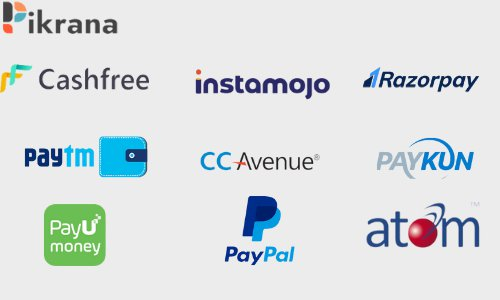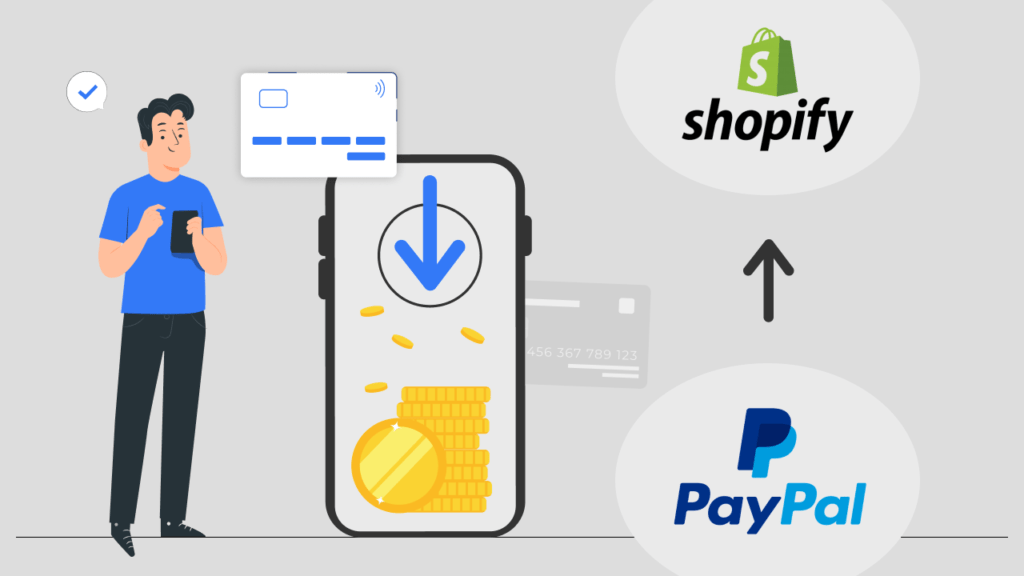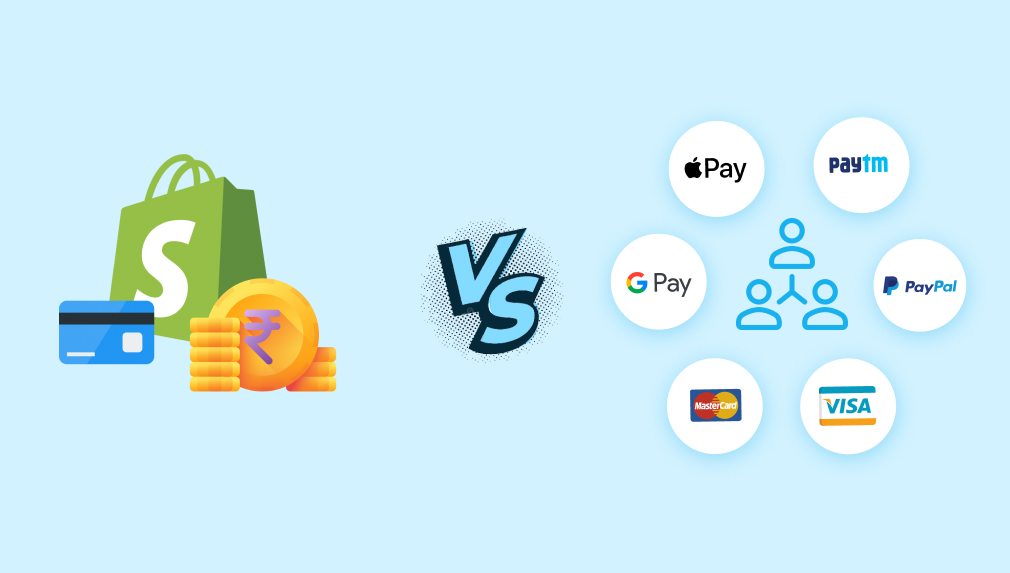Name : Darla kim
Date : 04-11-23
Shopify, the e-commerce platform that powers over a million businesses worldwide, has undoubtedly made it easier for entrepreneurs to set up and manage their online stores. However, behind the scenes of any successful e-commerce business lies a crucial component: payment methods. In this article, we will delve into the world of payment methods in Shopify, exploring the various options available to merchants and helping you make the best choice for your online store.
Understanding the Importance of Payment Methods
Popular Payment Methods in E-commerce
In the vast landscape of e-commerce, several payment methods are commonly used, each with its unique advantages and considerations. Let’s take a closer look at some of these popular choices:
Credit and Debit Cards
Credit and debit cards are the undisputed kings of online transactions. They offer customers convenience and security when making purchases. By accepting card payments, you can cater to a broad audience and ensure a smooth checkout process.
PayPal
PayPal, a trusted name in the online payment industry[1], provides a seamless and secure payment option for your customers. Integrating PayPal into your Shopify store can enhance user experience and credibility.
Alternative Payment Methods
Beyond the traditional, there is a growing[2] trend of alternative payment methods. Digital wallets like Apple Pay and Google Pay are gaining popularity, allowing customers to make quick, contactless payments. Cryptocurrencies[3] are also becoming a niche but intriguing option, enabling global transactions with minimal fees.
Setting Up Payment Methods in Shopify
Shopify offers a plethora of payment gateways that you can integrate[4] into your online store. These gateways play a significant role in ensuring a smooth transaction process for your customers. Let’s explore how to set them up:

Native Payment Gateways
Shopify provides its native payment gateway, Shopify Payments. Setting up native gateways is relatively straightforward, and it can be a convenient[5] choice for many merchants. It offers seamless integration and a familiar interface for store owners.
Third-Party Payment Gateways
Beyond native options, Shopify supports a wide array of third-party payment gateways. These may include well-known providers like Stripe, Square, or Authorize.Net, as well as region-specific solutions. Each comes with its unique features, transaction fees, and compatibility considerations. Integrating a third-party gateway allows you to tailor the payment experience to your specific needs.
Ensuring Security and Trust
Online shoppers are rightfully concerned about the security of their personal and financial information. Therefore, it’s crucial to provide a secure and trustworthy payment process. Here are some key considerations:
SSL Certificates
Secure Sockets Layer (SSL) certificates are essential for encrypting data, making it safe from potential threats. By securing your online store with an SSL certificate, you demonstrate your commitment to protecting your customers’ sensitive information.
Fraud Prevention
Implementing robust fraud prevention measures is vital for safeguarding your business and your customers. Utilize tools and best practices to identify and prevent fraudulent activities. Your customers will appreciate the extra security.

Optimizing for Mobile Payments
With the rising trend of mobile shopping, it’s crucial to optimize your payment methods for mobile users. Mobile-friendliness ensures a seamless shopping experience for your customers, leading to higher conversion rates.
Mobile-Friendly Payment Options
Make sure that the payment options you offer are mobile-responsive. This includes ensuring that payment forms and gateways are easy to use on smaller screens. The smoother the mobile payment process, the more satisfied your customers will be.
International Payment Methods
If your online business caters to a global audience, you must consider international payment methods to accommodate diverse customers. This involves addressing language and currency preferences:
Multi-Currency Support
To attract and retain international customers, consider offering multi-currency support. Allowing customers to pay in their local currency simplifies the purchasing process and reduces conversion-related friction.
Language Support
Consider providing language options on your payment pages. Multilingual payment options can enhance the user experience for non-English-speaking customers, making them feel more at ease during the checkout process.
Navigating Transaction Fees and Charges
Understanding the costs associated with different payment methods is essential for maintaining healthy profit margins. Here’s what you need to know:
Transaction Fees
Different payment methods come with varying transaction fees. These fees can be fixed, percentage-based, or a combination of both. It’s crucial to evaluate the fee structures of your chosen payment methods and factor them into your pricing strategy to maintain profitability.

Conclusion
In the fast-paced world of e-commerce, choosing the right payment methods is not just a matter of preference; it’s a strategic decision that can significantly impact your business. It influences your customers’ trust, your revenue, and ultimately the success of your online store. By understanding the various payment methods available, optimizing your checkout process, and prioritizing customer trust, you can elevate your Shopify store to new heights.
Frequently Asked Questions (FAQs)
Q1: What is the best payment method for my Shopify store?
The best payment method depends on your target audience, business goals, and location. Consider popular options like credit cards, PayPal, and digital wallets to start.
Q2: How do I set up Shopify Payments on my store?
To set up Shopify Payments, log in to your Shopify admin, navigate to ‘Settings,’ and select ‘Payments.’ Follow the setup instructions to activate Shopify Payments for your store.
Q3: Are there any transaction fees for using Shopify Payments?
Yes, Shopify Payments has transaction fees. The specific fees depend on your Shopify subscription plan. Make sure to review these fees when choosing your plan.
Q4: How can I optimize my Shopify store for mobile payments?
Optimizing your store for mobile payments involves ensuring that your website and payment gateways are mobile-responsive. Test the mobile experience to make sure it’s seamless for your customers.
Q5: Can I use multiple payment gateways on my Shopify store?
Yes, Shopify allows you to use multiple payment gateways simultaneously. This flexibility enables you to cater to a broader range of customer preferences and locations.
Shopify, the e-commerce platform that powers over a million businesses worldwide, has undoubtedly made it easier for entrepreneurs to set up and manage their online stores. However, behind the scenes of any successful e-commerce business lies a crucial component: payment methods. In this article, we will delve into the world of payment methods in Shopify, exploring the various options available to merchants and helping you make the best choice for your online store.
Understanding the Importance of Payment Methods
Popular Payment Methods in E-commerce
In the vast landscape of e-commerce, several payment methods are commonly used, each with its unique advantages and considerations. Let’s take a closer look at some of these popular choices:
Credit and Debit Cards
Credit and debit cards are the undisputed kings of online transactions. They offer customers convenience and security when making purchases. By accepting card payments, you can cater to a broad audience and ensure a smooth checkout process.
PayPal
PayPal, a trusted name in the online payment industry, provides a seamless and secure payment option for your customers. Integrating PayPal into your Shopify store can enhance user experience and credibility.
Alternative Payment Methods
Beyond the traditional, there is a growing trend of alternative payment methods. Digital wallets like Apple Pay and Google Pay are gaining popularity, allowing customers to make quick, contactless payments. Cryptocurrencies are also becoming a niche but intriguing option, enabling global transactions with minimal fees.
Setting Up Payment Methods in Shopify
Shopify offers a plethora of payment gateways that you can integrate into your online store. These gateways play a significant role in ensuring a smooth transaction process for your customers. Let’s explore how to set them up:
Native Payment Gateways
Shopify provides its native payment gateway, Shopify Payments. Setting up native gateways is relatively straightforward, and it can be a convenient choice for many merchants. It offers seamless integration and a familiar interface for store owners.
Third-Party Payment Gateways
Beyond native options, Shopify supports a wide array of third-party payment gateways. These may include well-known providers like Stripe, Square, or Authorize.Net, as well as region-specific solutions. Each comes with its unique features, transaction fees, and compatibility considerations. Integrating a third-party gateway allows you to tailor the payment experience to your specific needs.
Ensuring Security and Trust
Online shoppers are rightfully concerned about the security of their personal and financial information. Therefore, it’s crucial to provide a secure and trustworthy payment process. Here are some key considerations:
SSL Certificates
Secure Sockets Layer (SSL) certificates are essential for encrypting data, making it safe from potential threats. By securing your online store with an SSL certificate, you demonstrate your commitment to protecting your customers’ sensitive information.
Fraud Prevention
Implementing robust fraud prevention measures is vital for safeguarding your business and your customers. Utilize tools and best practices to identify and prevent fraudulent activities. Your customers will appreciate the extra security.
Optimizing for Mobile Payments
With the rising trend of mobile shopping, it’s crucial to optimize your payment methods for mobile users. Mobile-friendliness ensures a seamless shopping experience for your customers, leading to higher conversion rates.
Mobile-Friendly Payment Options
Make sure that the payment options you offer are mobile-responsive. This includes ensuring that payment forms and gateways are easy to use on smaller screens. The smoother the mobile payment process, the more satisfied your customers will be.
International Payment Methods
If your online business caters to a global audience, you must consider international payment methods to accommodate diverse customers. This involves addressing language and currency preferences:
Multi-Currency Support
To attract and retain international customers, consider offering multi-currency support. Allowing customers to pay in their local currency simplifies the purchasing process and reduces conversion-related friction.
Language Support
Consider providing language options on your payment pages. Multilingual payment options can enhance the user experience for non-English-speaking customers, making them feel more at ease during the checkout process.
Navigating Transaction Fees and Charges
Understanding the costs associated with different payment methods is essential for maintaining healthy profit margins. Here’s what you need to know:
Transaction Fees
Different payment methods come with varying transaction fees. These fees can be fixed, percentage-based, or a combination of both. It’s crucial to evaluate the fee structures of your chosen payment methods and factor them into your pricing strategy to maintain profitability.
Conclusion
In the fast-paced world of e-commerce, choosing the right payment methods is not just a matter of preference; it’s a strategic decision that can significantly impact your business. It influences your customers’ trust, your revenue, and ultimately the success of your online store. By understanding the various payment methods available, optimizing your checkout process, and prioritizing customer trust, you can elevate your Shopify store to new heights.
Frequently Asked Questions (FAQs)
Q1: What is the best payment method for my Shopify store?
The best payment method depends on your target audience, business goals, and location. Consider popular options like credit cards, PayPal, and digital wallets to start.
Q2: How do I set up Shopify Payments on my store?
To set up Shopify Payments, log in to your Shopify admin, navigate to ‘Settings,’ and select ‘Payments.’ Follow the setup instructions to activate Shopify Payments for your store.
Q3: Are there any transaction fees for using Shopify Payments?
Yes, Shopify Payments has transaction fees. The specific fees depend on your Shopify subscription plan. Make sure to review these fees when choosing your plan.
Q4: How can I optimize my Shopify store for mobile payments?
Optimizing your store for mobile payments involves ensuring that your website and payment gateways are mobile-responsive. Test the mobile experience to make sure it’s seamless for your customers.
Q5: Can I use multiple payment gateways on my Shopify store?
Yes, Shopify allows you to use multiple payment gateways simultaneously. This flexibility enables you to cater to a broader range of customer preferences and locations.





